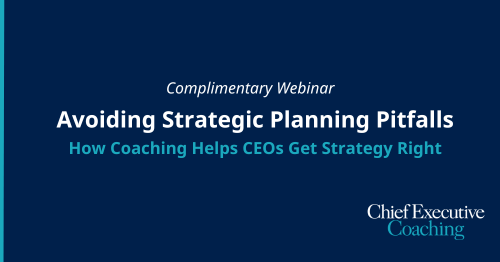
In an uncertain world, innovation plays an increasingly prominent role in driving value creation. Elastic innovation has blossomed, sustaining organizational resilience and adaptability. Shortened business cycles displace market incumbents at a faster rate than ever, manifesting in disruptive innovation that fuels a start-up boom as well as constant disruption and reimagining of existing business models.
In this environment, business leaders seek to measure and monitor their organizations’ innovative capacity, adding a foundational sixth “P” (People) to the traditional “Five P’s of Innovation Measures” (Pipeline, Pace, Process, Portfolio and Products). Measures under each category emphasize a direct link between innovation activities, outputs and value creation for an organization.
Leaders employ multiple dimensions of measuring People, each generally requiring enhanced analytical capabilities:
Leaders understand people are both the source of ideas and inspirations behind innovation as well as the engine to implement new or improved products and services. They also know innovation is about challenging the status quo. Therefore, a diverse workforce is fundamentally important in creating new ideas, not only as measured by its demographic traits but also through individual backgrounds and personalities. For instance, a good mix of tenure balances familiarity with organizational processes and bringing in outside perspectives to achieve better results. In addition, despite the pain and cost associated with turnover, healthy levels of attrition stimulate and energize workforces with new thinking. A deeper understanding of the performance and skills profile of joiners and leavers supplements hiring and attrition statistics in telling a more completely story. Moreover, a longitudinal dashboard that visualizes workforce diversity and career movements allows leaders to monitor the health of employee movement across functional disciplines or business areas, and thoughtfully introduce changes when required.
Example measures: Demographic diversity; detailed workforce breakdown (e.g., tenure, professional background/experience) at different levels of the organization; people and career movement; hiring and attrition rates; performance and skills data of joiners and leavers.
Leaders know innovation is a learned skill and not something innate in certain individuals. With the right nurturing, any employee can innovate in their distinct capacity. For knowledge- and judgment-based workers, this could mean learning the craft of A/B testing, stakeholder journey mapping, customer listening or rapid prototyping. It could also involve new technical skills or a better understanding of market trends. For administrative and manual workers, this could mean new approaches (within reasonable procedural, safety and quality limitations) to performing daily tasks that incrementally enhance efficiency and effectiveness or learning new tools and applications.
A skills architecture allows organizations to monitor and optimize skill requirements needed to formulate and implement new ideas beneficial to the business. More importantly, it allows leaders to make learning and upskilling more targeted to support the different stages of an innovation lifecycle—from the commercial awareness to develop new products and services to the technical ability to create prototypes and the business development acumen to engage with customers and conduct prototype testing.
Example measures: Utilization of employee training tools/courses; number of employees possessing critical skills by job discipline/family/level; gaps in skills demand (from the business) and supply (from talent) over time
A culture that fosters innovation amplifies the impact of people and skills. New ideas and inspirations are best cultivated in an environment where people feel safe to step outside their comfort zone and take risks, and where failing is considered an integral step of learning. When the purpose of their work resonates and employees feel dignity, improving the status quo is about making an impact. This inner drive is often more powerful than any extrinsic (e.g., pay-based) incentive system.
Employee engagement surveys and other employee listening techniques (e.g., in-person and virtual focus groups) are effective ways to assess the extent to which the work environment displays attributes of an innovative culture. A longitudinal view can help leaders understand progress and tweak management styles, while a cohort analysis can help address innovation barriers within specific segments of the population. Modern techniques such as natural language processing help encapsulate employee sentiments, which can be an important supplement to employee listening insights.
Example measures: Employee engagement scores (over time and by cohort) consensus ratings on cultural attributes; summary of employee sentiments
In a typical organizational hierarchy, middle management often is blamed for stifling innovation. Clayton Christensen’s “The Innovator’s Dilemma” discusses the role middle management plays in resource allocation, and how competing priorities mean that resource allocation becomes a natural barrier for innovation. This is only true when the formula driving resource allocation is centralized at the top of an organization. A distributed decision-making model, on the other hand, empowers managers and professionals to execute the overarching strategy. With the right culture, this gives middle management more freedom to take risks and pilot ideas at a higher velocity, possibly at the expense of management discipline and control.
Moderate refinements across the spectrum of top-down and distributed organizational models can stimulate an innovative spark anywhere in the organization. And from time to time, reshuffling functional alignment (e.g., changing grouping of business areas, putting different functional disciplines together) can inspire creativity. In addition to monitoring traditional organizational design metrics such as span of control, business leaders may benefit from tracking the evolution of functional and business area alignment to keep the workforce energized. Meanwhile, keeping monitoring sufficient non-core investments made at the grassroots level can help business leaders optimize management models for better innovation outcomes.
Example measures: Span of control; changes of job discipline and functional coverage over time; frequency and effectiveness of pilot programs driven bottoms-up or by middle management
Most traditional performance management and reward systems fundamentally discourage risk-taking. Employees often are penalized for failing, and the path of least resistance becomes performing their work in tried and tested ways. This mentality is the opposite of what fosters an innovative organization. While it generally does not make sense to reward for failure, holistic performance management systems consider the context of failure, whether the individual makes better decisions after learning from the failure, and the level of coaching required for the individual to build their path to success.
Managerial effectiveness is often a primary differentiator for human potential. Consider an employee with great innovative potential. This individual will likely thrive under an effective manager who encourages the employee to try new approaches, advocates for them in the performance calibration process, and coaches the employee to learn from failed attempts. The same individual would likely succeed less under a more rigid manager who defines performance more narrowly. The manager’s impact on the employee can extend well beyond the employee’s tenure at the organization – even a high-potential innovator can turn into an average worker without the right nurturing.
Example measures: Distribution statistics of how employees approach problem solving; manager ratings; innovation track record of employees
The connection between employee wellbeing and innovation is established. At organizations where the employee experience centers around employees’ physical, emotional, social and financial wellbeing, stress levels are lower and the company purpose is reinforced through their culture and supporting programs. In turn, employees can free up their mind to create and inspire. To amplify these benefits, organizations should seek to create not only a wellbeing-centric, but also an equitable employee experience. When all cohorts of the workforce feel emotionally connected to their work, the power of innovation multiplies.
Workforce and total rewards analytics allow business and HR leaders to gauge wellbeing outcomes within employee cohorts and mitigate cohort-specific stressors. For instance, for those who struggle disproportionately with higher healthcare costs or personal debt, targeted programs can be used to close the gap vs. the broader population. Analytics techniques to track wellbeing outcomes holistically and within each cohort are a great way to assess whether the organization has the support system to cultivate innovation.
Example measures: Health and wealth outcomes by cohort, stress ratings, utilization of supporting programs
Much of the burden of fostering an innovative organization rests with an organization’s talent infrastructure and people analytics capabilities. Business leaders will benefit from interpreting the results in a broader business context by ensuring that the organization has the right people, skills, culture, structure, programs, and wellbeing to prevail in an increasingly disruptive and dynamic economic ecosystem.



Chief Executive Group exists to improve the performance of U.S. CEOs, senior executives and public-company directors, helping you grow your companies, build your communities and strengthen society. Learn more at chiefexecutivegroup.com.
0

1:00 - 5:00 pm
Over 70% of Executives Surveyed Agree: Many Strategic Planning Efforts Lack Systematic Approach Tips for Enhancing Your Strategic Planning Process
Executives expressed frustration with their current strategic planning process. Issues include:
Steve Rutan and Denise Harrison have put together an afternoon workshop that will provide the tools you need to address these concerns. They have worked with hundreds of executives to develop a systematic approach that will enable your team to make better decisions during strategic planning. Steve and Denise will walk you through exercises for prioritizing your lists and steps that will reset and reinvigorate your process. This will be a hands-on workshop that will enable you to think about your business as you use the tools that are being presented. If you are ready for a Strategic Planning tune-up, select this workshop in your registration form. The additional fee of $695 will be added to your total.

2:00 - 5:00 pm
Female leaders face the same issues all leaders do, but they often face additional challenges too. In this peer session, we will facilitate a discussion of best practices and how to overcome common barriers to help women leaders be more effective within and outside their organizations.
Limited space available.

10:30 - 5:00 pm
General’s Retreat at Hermitage Golf Course
Sponsored by UBS
General’s Retreat, built in 1986 with architect Gary Roger Baird, has been voted the “Best Golf Course in Nashville” and is a “must play” when visiting the Nashville, Tennessee area. With the beautiful setting along the Cumberland River, golfers of all capabilities will thoroughly enjoy the golf, scenery and hospitality.
The golf outing fee includes transportation to and from the hotel, greens/cart fees, use of practice facilities, and boxed lunch. The bus will leave the hotel at 10:30 am for a noon shotgun start and return to the hotel after the cocktail reception following the completion of the round.